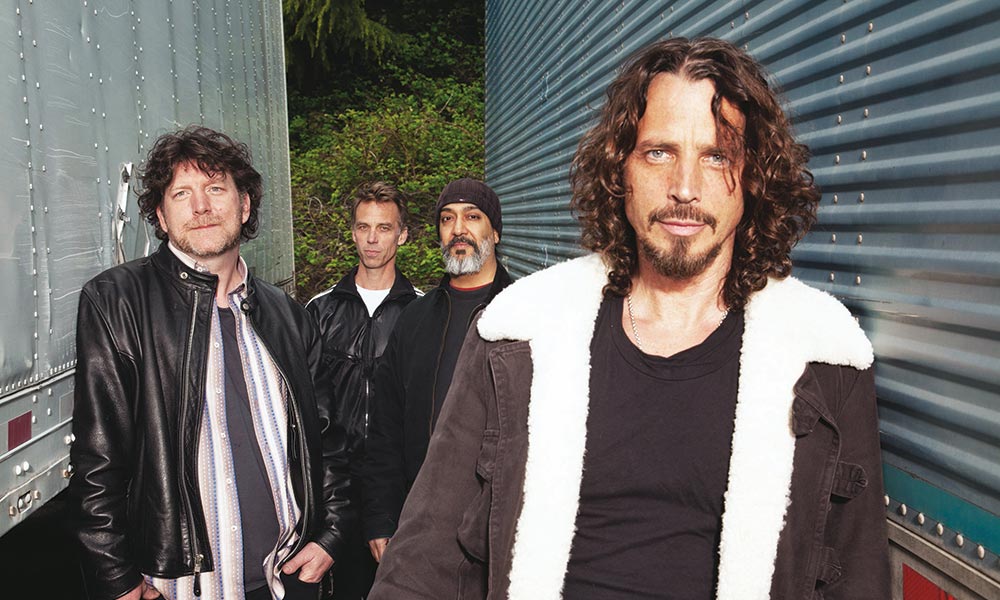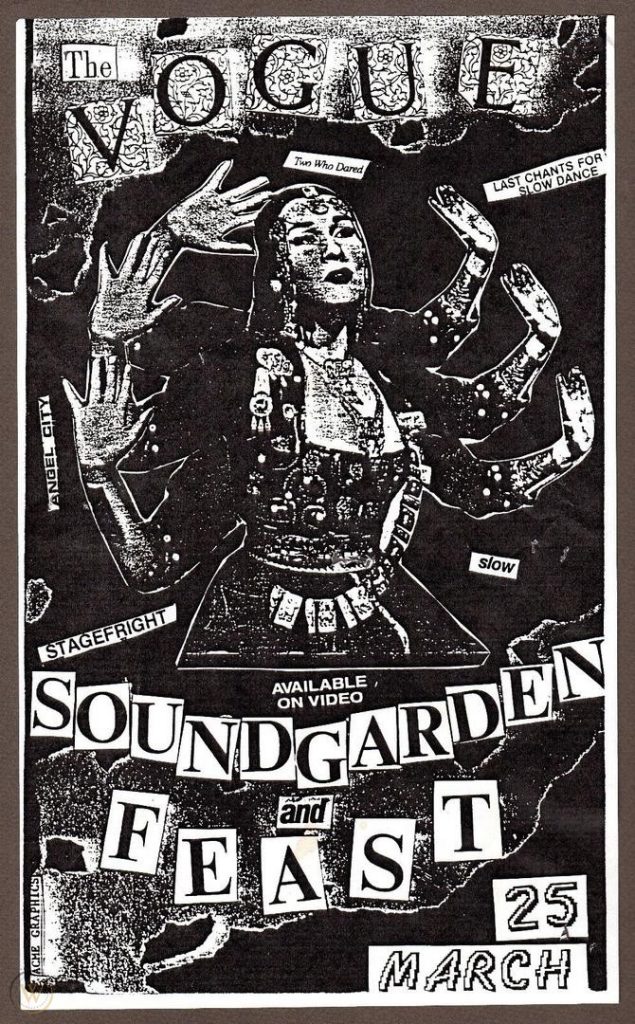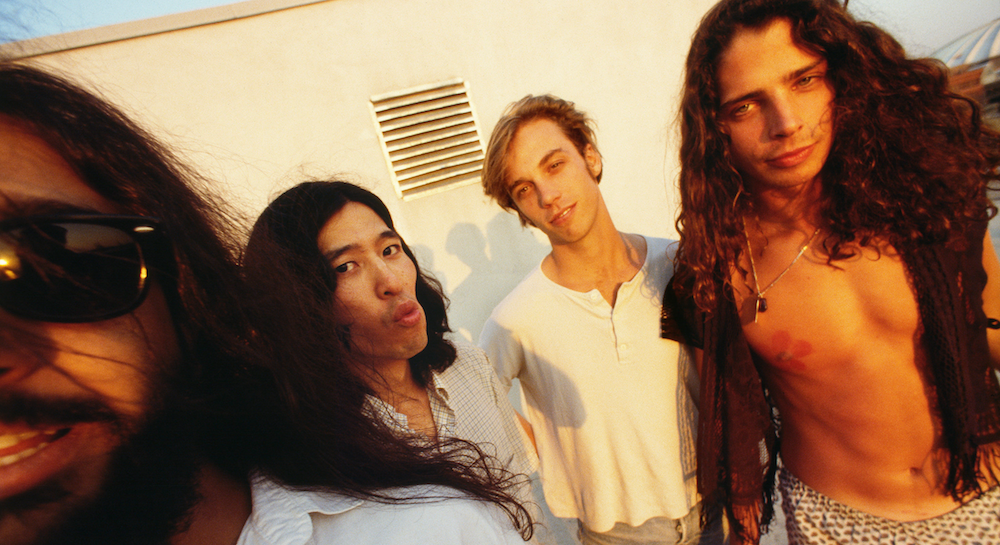Podcast: Play in new window | Download | Embed
A band that came to represent the Grunge movement of the early 1990’s transcended it to create a new type of Classic Rock.
It totally used to be a thing, and by and large, it still is to this day: Metal kids don’t listen to Punk, and Punk kids don’t listen to Metal. Why yes, it does sound awfully juvenile, much like the saying that “girls listened to the Beatles, and the guys liked the Stones” back in the mid-1960’s.
However, it seems no one told the young people of the Pacific Northwest about this odd segregation in the 1980’s. Here, isolated from the rest of country geographically and in personality, the kids decided to take something from both of these music genres and greate a whole new beast that had been over a decade in gestation: Grunge.

Most associated with a city once best known for Boeing and Starbucks, Grunge was a branch of the music movement called Alternative Rock; Alt-Rock existed other parts of the U.S., but of course, Grunge being something completely unique to Northwest. It was anti-pop, anti-fashion, anti-art; a real Do-It-Yourself (D.I.Y) vibe with little to no money. Most importantly, have a good time while doing it.

It also quickly became a cliche once it left the Pacific Northwest. The true Seattle scene, comprised of bands like Nirvana, Soundgarden, Alice In Chains, Pearl Jam and Mudhoney, ended when those bands took their new, hybrid sound across the map and broke with the Alternative genre mainstays of post-punk, goth, new wave-y synths and jangly guitars.
No matter what, I can’t sound like John Lennon. But I can do Tom Jones.
Chris Cornell, vocalist for Soundgarden.
Of all of these bands, Soundgarden were the first signed to a major label, but they still wished to build indie credibility with releases on Sub Pop (Screaming Life) and SST (Ultramega OK). They soon found the narrow descriptions associated with the scene altogether blase by the early 1990’s when the little scene that could spawned a whole new subculture of cool sound and attitude, a rough and tumble design ethic and a Northwest mainstay thrift store fashion style. Of the latter, that meant right down to purchasing flannel shirts for outrageous prices in your local mall.

After several years of steadily building their audience through touring and new releases on A&M records, Louder Than Love and Badmotorfinger, the band had released what is now considered a bona-fide all-time Classic Rock album, Superunknown in 1994, which also hit the pole position on the Billboard 200 LP’s chart in its first week. The cracks were forming, however, and by the time of their next release in 1996, Blow Up The Outside World, Soundgarden called it a day. Members would form other bands, start solo careers and all of the other trajectories such a break-up usually entails. They did, however, regroup and release one more album of new material, 2012’s King Animal.
The reunion would be short-lived: Chris Cornell, who often spoke of depression, death, choking and rope in his songs, died from suicide by hanging in 2017. Along the way, even with helping to develop a brand new musical trend, Soundgarden seemingly did the impossible: yes, there are some radio hits, but their albums of the era stand up to the best of any major popular act in history, a testament to the mastercraft and unity the group put into everything they did. They helped created a new type of Classic Rock that eventually found an audience on mainstream broadcast media.

Of all of the nominees for this year’s Rock and Roll Hall of Fame 2020 induction, little to no noise noise has been made against the band’s nod, signalling that once in a while, the people who make this happen in Cleveland actually hit on something that needs no debate about the inclusion. It truly can’t get much better or on point than Soundgarden.
NOTE: The track “Big, Dumb Sex” contains language some may find objectionable.
First Part
- All Your Lies, 1988, Ultramega OK
- Birth Ritual, 1992, Singles soundtrack
- Burden In My Hand, 1996, Blow Up The Outside World
- Drawing Flies, 1991, Badmotorfinger
- Little Joe, 1987, Screaming Life EP
- Taree, 2012, King Animal
Second Part
- Head Injury, 1988, Ultramega OK
- Spoonman, 1994, Superunknown
- Gun, 1989, Louder Than Love
- Fell On Black Days, 1994, Superunknown
- Jesus Christ Pose, 1991, Badmotorfinger
- Big Dumb Sex, 1989, Louder Than Love
Finale
Into The Void (Sealth), 1991, Satan Oscillate My Metallic Sonatas
Love to you all.
Ben “Bear” Brown Jr.
Host, Producer, Audio Engineer and Writer
#soundgarden #grunge #altrock #RRHOF
“Copyright Disclaimer Under Section 107 of the Copyright Act 1976, allowance is made for ‘fair use’ for purposes such as criticism, comment, news reporting, teaching, scholarship, and research. Fair use is a use permitted by copyright statute that might otherwise be infringing. Non-profit, educational or personal use tips the balance in favor of fair use.”
